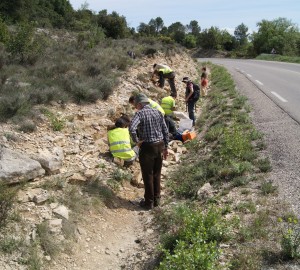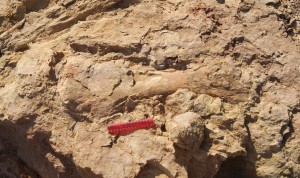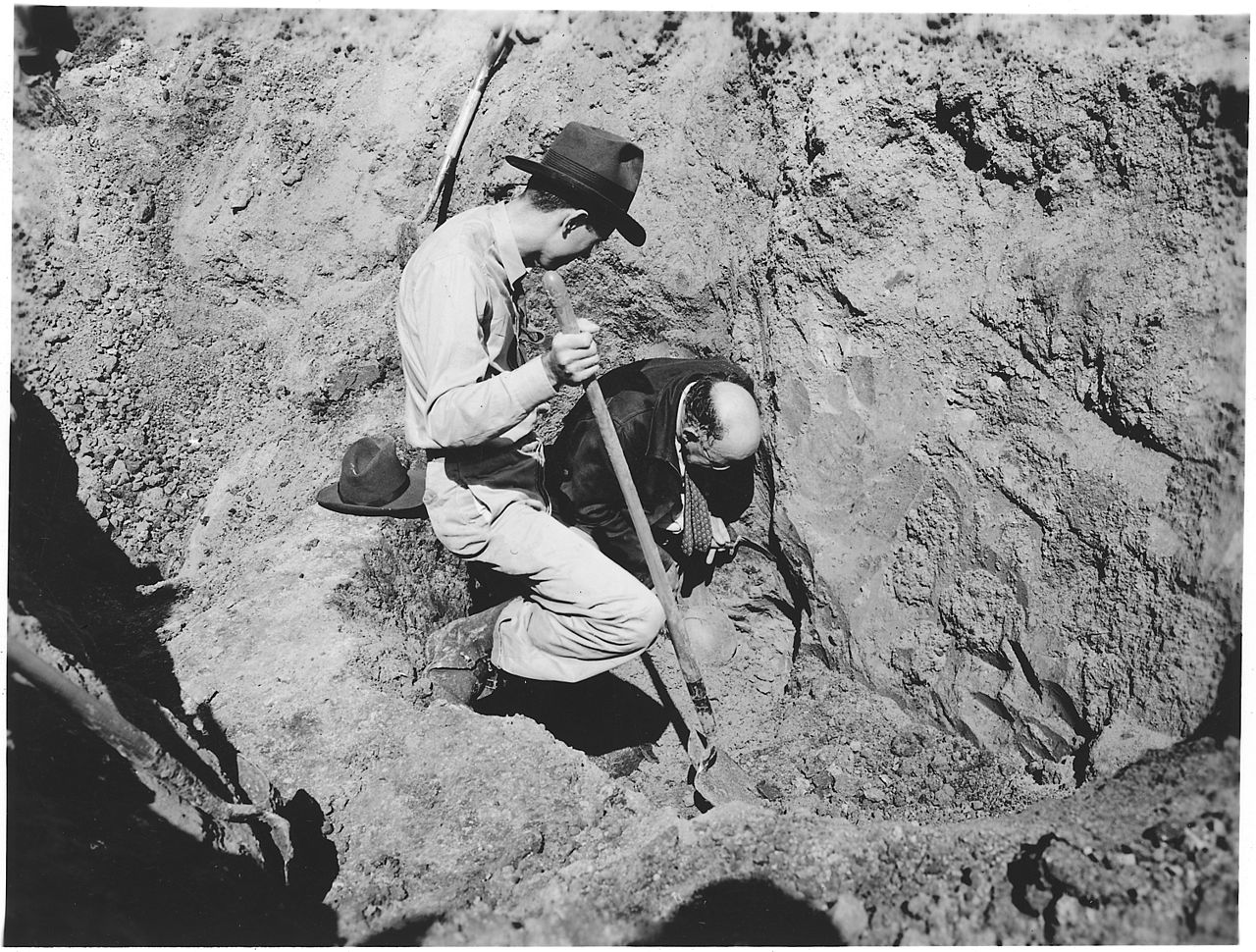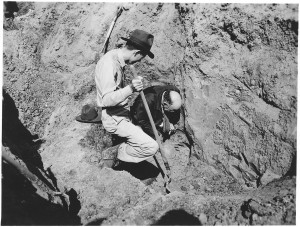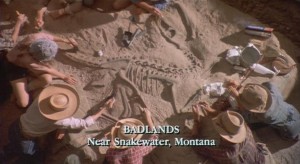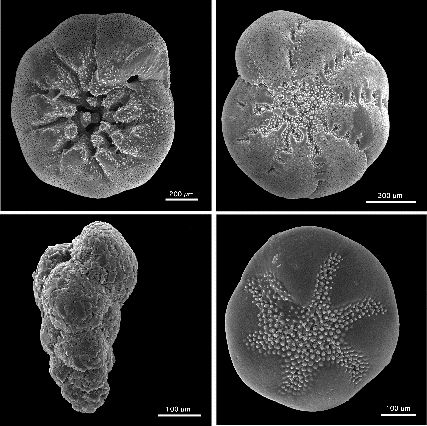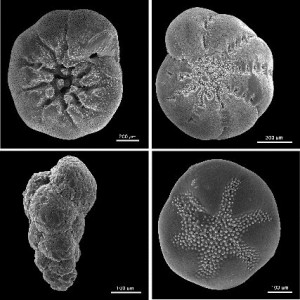Every year, the Trinity College Dublin Zoology, Botany, and Environmental Science moderatorship students (final year undergraduates) complete their own research projects related to their course. It has been my absolute privilege to spend time with these talented students and to watch their projects take shape. I am blown away by the dedication they show, the incredible topics they cover, and the way in which they approach their investigations. After their theses are submitted, the students hold a poster session where they present their work. From beetles to beer and back again, this year’s students have done impressive and solid work. I hope all our readers enjoy learning about these projects as much as I did! If you’d like to contact any of these students to congratulate them, offer them prizes/jobs, or learn more about their projects, most of them have included contact information. Without further ado, I’ll let them take it away!
-Maureen Williams, PhD Student, Zoology
Dig for victory
In a previous post I showed what I think being a palaeontologist is all about, especially the point that palaeontologists are different from oryctologists. The first ones study changes of biodiversity through time, the second ones extract fossils (but again, both are far from exclusive).
Here is a short summary of experience working at Upper Cretaceous excavation sites in the South of France (that’s around 80-65 million years old) namely in the Bellevue excavation site in Esperaza run by the Musée des Dinosaures.
First step is to find a place to dig.
Why along the road? It doesn’t have to be but it has two clear advantages: you can park your car next to it and it’s usually rich in fresh outcrops of rock (where you can find more fossils than in a crop field!).
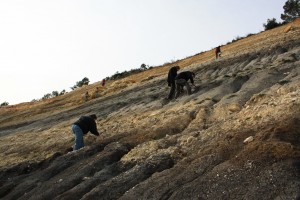
The second step, once you’ve decided that there might be something in the outcrop you’ve just explored, is to remove all the “annoying stuff”. To palaeontologists that obviously means all the wonderful fauna and flora and their associated environment (usually soil) that are growing above the potential fossiliferous site (how rude of them!).
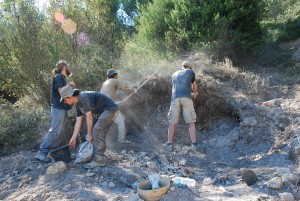
Once you’ve removed the layer of living stuff, you can start the long and interesting part: hitting rocks with a hammer and a pike during the hottest days of summer.
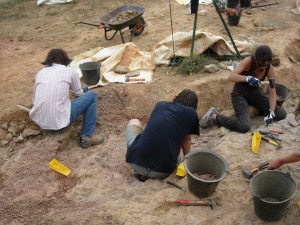
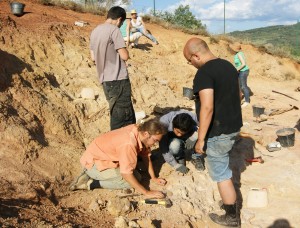
Finally, with a bit (a huge bit) of luck, you’ll find a fossil that was worth all this hassle.
Once you’ve found the fossil, the first step is to clean the surface facing you and start to build a trench around it in order to pour plaster over it and bring it to the lab. As you can see, paint brushes are useless here too: the hammer and the pike make ideal tools for the surrounding trench and an oyster knife and a smaller hammer do the cleaning jobs. Oh yeah, and a tube of glue. After around 80 million years, the bones get a bit fragile.
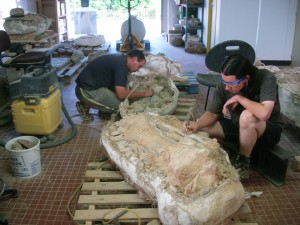
The last step is to properly clean the fossil in the lab by removing it from all the surrounding rock. The best tools are mini pneumatic-drills and loads of patience. When all that is done, the palaeontologist can start to work on the fossil.
You can find more impressive pictures on the Musée des Dinosaures webpage.
Author: Thomas Guillerme, guillert[at]tcd.ie, @TGuillerme
Images: Thomas Guillerme and Sébastien Enault (with the kind authorisation of Jean Le Loeuff). Feature image: http://www.libraryofbirmingham.com/
What is(n’t) palaeontology like?
After rereading Sive’s excellent blog post on what is a zoologist or at least what is it like to study it, I remember having a slightly similar difficulty in explaining my background in palaeontology. Reactions range from: “Oh… Palaeontology? That’s like the origins of humans and stuff?” or “So you go on excavations and find ancient Roman pottery?” to “Bheuuh, want another beer?”. What frustrated me is that none of these reactions are correct but neither are they totally incorrect (especially the last one!).
Palaeontology is not archaeology
Most people that have only a vague idea of what palaeontology is are usually not big fans of Jurassic Park and don’t know Alan Grant so they usually associate palaeontology with Ross Geller or Indiana Jones. Being not a big fan of TV series, I don’t know whether Ross is a good representation of the reality of life as a palaeontologist but I know that Indiana is not. Not even a little bit. He’s an archaeologist. That might be a nerdy detail for some but to understand what palaeontology is about, it is important to understand the difference. Even though both archaeologists and palaeontologists study the past based on what they find in the ground (and in books!), the time scales involved make the two disciplines impossible to compare. Archaeologists are mainly interested in human culture (they might find animal bones but they are usually the fragments of crafted objects). In contrast, palaeontologists are interested in the remains of life that occurred before human civilisation. Therefore we have two very different time scales here: from years to centuries or, at a push, millennia for archaeologists and from hundreds to millions of millennia (or billion of years) for palaeontologists.
Palaeontology is not about excavations
Palaeontologists do not excavate fossils, that’s a job for Oryctologists. Okay, I’m being picky with the terms here but, again, the distinction is important. Most palaeontologists are also oryctologists, meaning that they go into the field and do excavations as the basis for their scientific work (yeah, in the end, that’s not a cliché, one of the nicest parts of the job is field work!). However, not all palaeontologists are oryctologists (even though most are) and many oryctologists are not palaeontologists. Again, palaeontology is not only about digging up fossils and putting them in museums (contrary to what this song suggests), it is about the study of changes that occurred on our planet through deep time (geography, climate, etc…) and how they affected living organisms (evolution, extinction, etc…).
While we’re on the subject of oryctology, there is a huge public misconception about excavations. Most people that have seen Jurassic Park might think that, in the 90’s, one could just go into the field armed with nothing but a paint brush and happily stumble across a complete Velociraptor (Deinonychus!) skeleton which just had to be cleaned out from the surrounding layers of dust. This scenario would certainly make palaeontology way more straightforward and easy but it would also mean that excavations would be just boring routines where a hoover would do a better job than a naively enthusiastic undergrad student!
Even though excavation techniques are at least as numerous as excavation sites, the paint brush must be one of the rarest tools. Personally, I’ve tried things like hammering a cliff with a pike, shoveling dust and blocks of stone, digging in solid clay with an oyster knife or sifting tons of bags of sediments after diluting it in acid in a lab. None of these activities are similar to the restful act of flicking away sand with a brush (but they’re still a lot of fun!).
Palaeontology is not dusty
The two points above are understandably confusing for the general public because of the Hollywood image of palaeontologists, depicted as “adventurers, not really serious, but entertaining” (to translate a quote from Eric Buffetaut’s book “À quoi servent les dinosaures?”). One might think that other scientists would have a better understanding of palaeontology. However, even if they generally understand the discipline and its implications better than the general public: “Paleontology has a reputation as a dry and dusty discipline, stymied by privileged access to fossil specimens that are interpreted with an eye of faith and used to evidence just-so stories of adaptive evolution” (Cunningham et al 2014).
Thankfully, however, the discipline that studies traces of evolution has not escaped evolution of its own. The “privileged access to fossil specimens” has been replaced by either huge online databases (just one example and one other among thousands) or accessible and well-curated collections. The “eye of faith” has been replaced by X-Ray tomography, Surface scanners and synchrotrons; and the “just-so stories” are now replaced by integrative studies leading to a new vision of the history of life…
Palaeontology is… great
The differences between a nerdy “Indianajonesomorph” oryctologist that knows all of the dinosaurs’ names by heart and a realistic palaeontologist are what makes palaeontology so interesting. More than the taxonomy, taphonomy, comparative anatomy and cladistic tools that palaeontologists use, palaeontology is about the idea that everything is constantly changing and that we live in just one fleeting moment in the vast history of life.
However, I still like the image of the “adventurers, not really serious, but entertaining”… As long as palaeontologists don’t take this image seriously themselves!
Author: Thomas Guillerme, guillert[at]tcd.ie, @TGuillerme
Images: Wikicommons
The Easter bunny’s origins are linked with climate change
The Easter Bunny apparently originated in German Lutherans’ traditions before 1682 when it was first mentioned in von Franckenau’s De ovis paschalibus. In France and Belgium however, it’s not a rabbit that hides eggs in the garden for Easter morning but flying bells coming back from Rome (they went there for their holidays since the Maundy Thursday). For many people this makes no sense at all (flying bells, come on!) but on the other hand I think that a bunny carrying coloured eggs and hiding them does not make much more sense… Continue reading “The Easter bunny’s origins are linked with climate change”
Seminar series: Tom Ezard, University of Southampton
Part of our series of posts by final-year undergraduate students for their Research Comprehension module. Students write blogs inspired by guest lecturers in our Evolutionary Biology and Ecology seminar series in the School of Natural Sciences.
This week; views from Sarah Byrne and Sean Meehan on Tom Ezard’s seminar, Birth, death and macroevolutionary consequences.
Splitting Hares – easier said than done?
In a recent talk given by Tom Ezard, a research fellow and evolutionary ecologist, the definition of a species was examined and challenged. While defining a species may seem a simple task for just about anybody and in particular a room full of people with a biology background, the actual definition can be harder to understand when thinking about fossil or species’ records and gaps across time. Ezard highlights that a dynamic approach is needed when discussing speciation and the definition of a species. Claiming that you shouldn’t define a species at one particular moment in time, he details that large gaps in the fossil record make it very difficult to have a fully complete picture about speciation events. In other words, making inferences about speciation events from a certain snapshot in time could overlook the dynamic process of change that occurs over time and give us inaccurate theories about the macroevolution of species.
Following on from the definition of a species, Ezard was interested in the fossil record and how it can give us information about the species record and also, more importantly, about diversity. He was interested in finding out where these gaps in the fossil record had occurred and what impacts they could possibly have. In graphs he provided, it was clear that there was a difference between data over time with more species surges found in recent data in comparison with the past, indicating the number of species has increased over time. However, it’s a little misleading because as time develops we learn more about how to indentify species of have better techniques to do so, it is therefore unclear as to whether or not there has been a big increase in species.
To better explain some complicated parts of the speciation theory, Ezard used a baseball analogy which I was thankful for, showing a picture of various baseballs over time. Ezard explained how techniques improve over time and how the original was very different to the new and modern ball. All of the baseballs of various different ages, textures and shapes remained part of one game (or one species) and that there was no split into a new game (or new species). He stressed that this continuation was very important in understanding macroevolution and when identifying species, that it was vital to look at gaps in the lineage. This brings us back to the fact that the fossil record needs to be examined further and the question of what is meant by a species may need to be redefined. Ezards definition of a species as ‘a single line of descent, a sequence of populations evolving separately from others seems closer to the real definition than previously thought.
Speciation was also a key factor of Ezard’s talk and he was interested in identifying budding speciation events while still being able to identify their ancestors. Two main types of speciation and evolution were discussed in the talk, one type; anagenesis refers to a change along a branch of a phylogeny or the evolution of a gradual change within a species over time. This theory was backed by Darwin and eventually leads to a speciation event. In contrast, cladogenesis, where a population stays stable until a big speciation event happens suddenly and then a splitting occurs between species that ensures they can then not reproduce with each other.
The split can be caused by either biotic or abiotic factors with disagreements regularly occurring between geologists and modern evolutionary biologists over whether the biotic factors (such as competition) or the abiotic factors (such as climate) are the main key drivers affecting species ecology and diversification. So, what is the main driver affecting species ecology and in turn speciation and diversification? Ezard was interested in finding this out.
Using observational studies, algorithmic processes and a multivariate complex approach, Ezard was able to account for ecological differences between species. Lotka’s equation gave an estimate of birth and death models that detailed speciation probability and extinction risk. Species respond differently to global drivers of change and these differences have macroevolutionary consequences. The Red Queen Hypothesis mentioned above, a biotic factor that describes how predator and prey are continually adapting to out-do each other affects species much more so than climate does, and in comparison, climate, an abiotic factor has much more of an effect on extinction.
So, it seems that a combination of both factors are important although they affect both speciation and extinction at different rates. Ezard indicated that, in order to understand diversity, it was first necessary to understand the biotic factors that impact the split and to then devise a model to draw these two areas together. Ezard’s enthusiastic and engaging approach clearly showed his passion for the subject and the interesting topic left me with a lot to think about it.
Author: Sarah Byrne
——————————————————————-
Lumpers and Splitters: Apparently they’re not varieties of potato
What is a species? This question seems so fundamental to biology that surely the experts have answered it by now, right? Wrong. Defining a species is a difficult thing, and each new definition seems to come up short in certain criteria. For example Ernst Mayr’s widely used definition of a species: “groups of actually or potentially interbreeding natural populations, which are reproductively isolated from other such groups” completely disregards species which reproduce asexually. For this reason I like Simpson’s evolutionary concept for defining a species and this is precisely what Tom Ezard uses for his work on macroevolutionary dynamics. This concept holds that each species represents a single line of descent; it begins with a speciation event and terminates with extinction. Ezard used the evolution of the baseball to demonstrate this concept. Although the modern baseball is considerably different from its original ancestor, it is still a baseball and there have been no ‘speciation’ events or splits in the lineage to form a new type of ball.
It was Darwin who first coined the term ‘lumpers and splitters’. Lumpers are those biologists who tend to ‘lump’ many ‘species’ in together as one. The splitters are those biologists who like to make as many ‘species’ as possible. In his 1945 work ‘The Principles of Classification and a Classification of Mammals’ George G. Simpson notes rather sardonically: “splitters make very small units – their critics say that if they can tell two animals apart, they place them in different genera … and if they cannot tell them apart, they place them in different species. … Lumpers make large units – their critics say that if a carnivore is neither a dog nor a bear, they call it a cat.” So we can see that this problem is an old one, and that Simpson’s evolutionary concept is very useful for defining species in macroevolutionary studies.
In order to study macroevolutionary dynamics one needs a fairly detailed picture of a clade’s development, and not many organisms provide a suitable fossil record for a detailed study. Fortunately Ezard and his team found the perfect organisms for this purpose; the Foraminifera. These creatures are marine dwelling amoeboid protists. When they die they sink to the bottom and leave behind their calcium shells or tests. They are deposited and preserved on the sea floor and in the right conditions over time can form stratified layers of fossils which give a very complete picture of their evolution over time. Also,the stable isotope ratios of oxygen in the shells can be used to reconstruct palaeo-climatic conditions. These attributes make them incredibly useful in the study of macroevolutionary dynamics.
So, what are the driving forces of speciation? Is there one factor which influences this process above all the others? This is what Ezard and his team set out to investigate. The foraminifera had an interesting story to tell. It was found that incipient species diversify the fastest. This was found to be primarily due to biotic factors or ‘Red Queen’ factors. As a clade grows older it was found that diversification slows due to diversity dependence. However, it was found that extinction is primarily influenced by climatic or Court Jester factors. These findings are important in order to grasp a general understanding of macroevolutionary dynamics. It means that impacts of diversity and climatic fluctuations are not felt uniformly across a phylogeny. More simply put, it means that the extent of the effect of biotic and abiotic factors on a clade depend on how old it is.
In summary, what Ezard and his team found was that there is no dominant macroevolutionary force, but that, a combination of biotic and abiotic variables drive speciation and extinction. They also found that species’ ecologies are important driving forces in these processes.
Author: Sean Meehan
Image Source: Wikicommons
We need Tarzan to fill the gaps!
Nature News published a new post about our origins. It’s promoting Stevens et al’s 2013 paper that published the description from two new granddads/grandmas in our already complicated family tree. These guys, Nsungwepithecus and Rukwapithecus (it’s not that hard to pronounce, try it) are considered by Stevens and his team as the oldest crown Catarrhines – [Google translate palaeo-primatish to English: “as closely related as the ancestors of you and your cousin the proboscis monkey (we all knew there were some facial similarities!)”]. Technically speaking, these fossil discoveries pushed the origin of modern Catarrhines back from 20 to 25 million years ago, a date which is closer to molecular results (25-30 mya). Astonishing eh? Well it is for me but there’s another reason why I wanted to talk about this paper: gaps.
As many people might know, the fossil record contains some serious lacunas; thick layers of rock containing either very few or no fossils at all. One example mentioned in this paper is the scarcity of fossils from the Oligocene period; very few bones for palaeontologists to gnaw… The Oligocene was, however, a period of massive changes, in climate and all that stuff but also the time when placental mammals evolved from their primitive to modern forms. So the lack of fossils from this time is always frustrating when you want to understand macro-evolutionary patterns. But why have we found so few Oligocene fossils until now? Of the many explanations Stevens et al. suggest that “Possible reasons […] include limited deposits of appropriate age, particularly […] below the equator, complicated by densely vegetated topography in more tropical environments”. And that’s why I find this article so exciting! Traditionally, fossil primates were excavated in deserts or northern latitudes, which is typically where they are fairly rare nowadays! Therefore, I’m happy to see that there is a true effort being made to look for fossils in biodiversity hotspots such as Tarzan’s neighborhood (or the Tanzanian Rukwa Rift Valley in this paper) where these new primates were discovered.
I think one of the most important things to come from this paper is that it’s proof of a real effort to look for the fossils in the true biodiversity hotspots which, I’m sure will lead to far better comprehension of modern mammalian history. These new primates came from Africa but people are also working in Peruvian jungle and interesting new discoveries are not limited to just primates…
Author
Thomas Guillerme: guillert@tcd.ie
Photo credit
wikimedia commons



